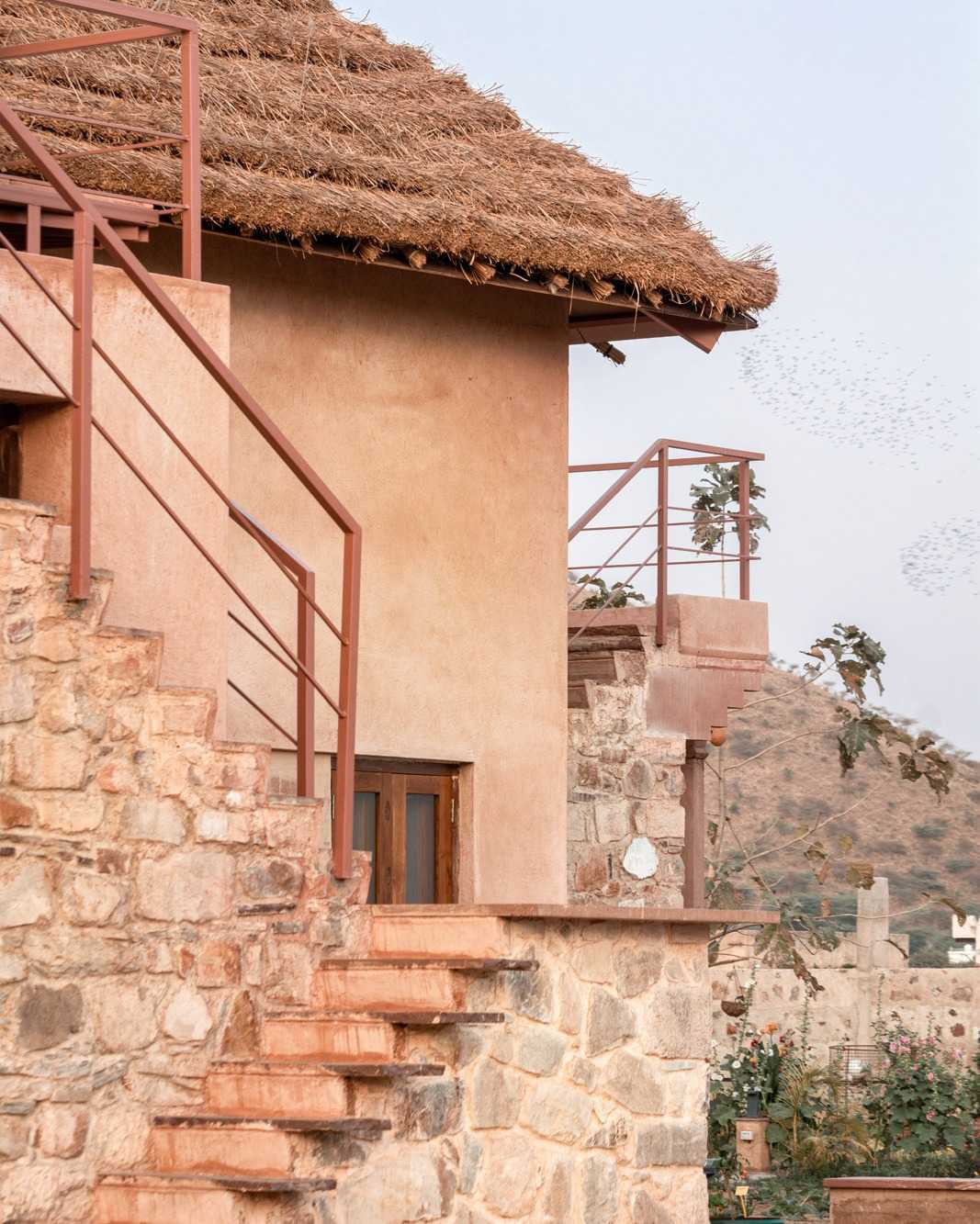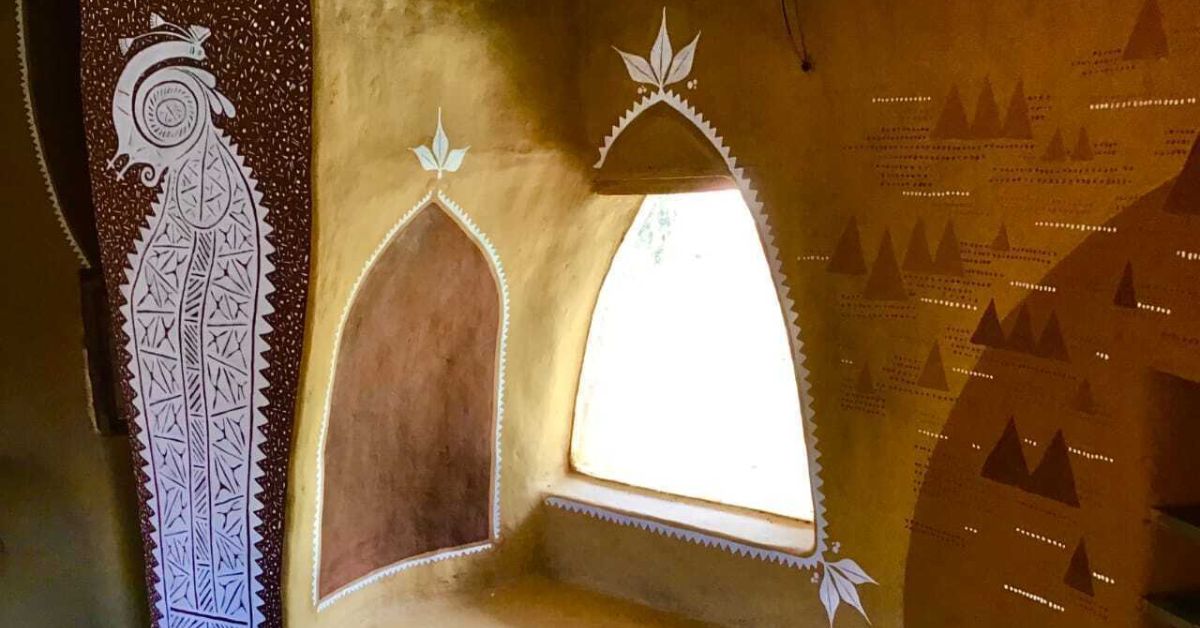Heatwave Alerts in India: How to Design Homes that Don’t Need ACs?
With soaring temperatures and warnings of heatwaves in several Indian cities, architects share how to build homes that stay naturally cool and don't require air conditioning at all times.

“It’s unbearable,” says Vinaya K, a Bengaluru resident, highlighting how the incessant heat has disrupted her daily life. Despite experiencing a day of relief with some rain, the city is still facing a dry spell of over 150 days, and the heat continues to prevail.
The Indian Meteorological Department describes heat waves as occurring when the maximum temperature in plains reaches at least 40 degrees Celsius or more, and at least 30 degrees Celsius or more in hilly regions.
The department has issued a warning for hotter temperatures across several states in the coming weeks. According to a report by The Times of India, temperatures have soared between 40 to 45 degrees Celsius in parts of Odisha earlier this week. Similar conditions have been observed in Gangetic West Bengal, Chhattisgarh, Jharkhand, Vidarbha, and southwestern parts of Madhya Pradesh, among other regions.
Rising temperatures lead to an increase in the use of air conditioners and electricity as people try to escape the heat. “Working from home becomes more challenging as the temperature starts to rise as early as 7 am. Living in apartments doesn’t allow us much room to naturally cool the space,” Vinaya adds.
Although the situation may seem bleak, architects and designers suggest, depending on your geography, a few steps to keep your home naturally cool. The Better India spoke with several experts to learn about the secrets of designing a ‘cool’ house.
Going Back To Your Roots
If you look back at the houses that our ancestors built, the structures with open spaces, inward-looking homes with courtyards and huge windows helped to keep the home naturally cool.
Samira Rathod, an architect and designer, applied similar techniques to make a “Cool House” located in Gujarat. The architect decided to utilise the wind, design and cooling materials to build and cool down the house.
The architect suggests using the wind in a way that it travels through the home making it cooler. For the cool house located in Gujarat, she used a “track-like design with rooms on either side of the house with a courtyard to help the wind circulate.”

Evaporative cooling for your home
Shipra Singhania, the principal designer of Sketch Design Studio, created her home alongside her mother using neem, jaggery and methi. The house uses a thatch roof to keep the house breathable and cooler in the summer.
She shares, “It is always a good idea to look back at our ancestors and how they used various techniques to deal with indoor heat. Evaporative cooling is a technique where you build an indoor water body, let’s say a fountain to cool down the temperature inside the house,” she says.
“A water body in the house can do wonders. Additionally, it can also cool down the air that passes through the home. This method is very effective in homes in the northern parts of the country where the humidity is relatively low,” she adds.
Trees and shade keep your home happy
Trees have been the best friends of humans since the beginning of time. From giving us food to shelter under its shade, trees are something that the architects advise to have around the home.
“I cannot emphasise enough the need and importance of trees around your home. They bring in shade, and wind and moderate the temperature around them. Plant as many trees as you can around your home and try to incorporate the existing ones in the design. Trust me, they are going to be a lifesaver in the heat,” says George Ramapuran, the founder of sustainable design firm, Eartitects.
He has built numerous estates around the theme of sustainability and nature conservation.
Agreeing with George, Shipra also emphasises the importance of greenery to keep the heat at bay. “While constructing the home, you can always look at the region-specific trees and plant them in the areas where your home will have verandas and windows. This will ensure shade in those areas and also will help in better wind circulation,” she says.

Direction of the wind and sun
Understanding the direction of the wind and sun is very important while constructing your home. “Planning is crucial when constructing a house. The western sun can be harsh, while the southern exposure brings in heat. It’s important to build verandas on these sides of the house to help filter the sunlight and reduce the heat entering the home,” advises George.
You can also include things like ‘jaalis’ (lattice) and smaller openings, other than windows and verandahs, advises Shirpa. Samira, too, emphasises the importance of jaali structures to increase more wind and natural light inside the house.
Shipra shares, “For the roof, you could consider making it slanting instead. While modern designs do not support it, such roofs are really good for homes. They bring in more shade in the house, they look authentic and the sun is never hitting the entire roof at one time.”
Natural materials make a cooler home
When it comes to materials, the three architects agree that using natural materials can bring down the temperatures significantly.
“Study the area well before you start constructing your home. By knowing the area well, you can find natural and traditional materials to build your home. Mangalore tiles are something that I recommend to all my clients. These tiles are very durable and breathable. A Mangalore tiled roof is not concrete and has space for cross ventilation letting the house breathe,” George says.
Using materials such as wood and stones for construction instead of cement can also do wonders for the home.
“Again, I would emphasise the use of traditional materials such as mud, straw and lime to make homes. Mud is a natural coolant and a lot of people are turning towards mud homes. Additionally, using lime on the floor or the walls can also help you bring down the temperature of the house significantly,” says Shipra.
For existing apartments
If you have a home that is already constructed and has no scope for reconstruction, there are some jugaads (quick fixes) that these architects have suggested.

1. Consider building a small terrace garden for increased greenery and shade in the home, suggests George.
2. You can also consider painting your roof white so that it reflects some of the heat. “This is quite effective and I have done it in my own home too,” George shares.
3. Sherpa advises using Khus (a native Indian grass which has traditionally been used as a coolant in Indian households) or any dried grass sheet, the ones that are typically used in coolers on your windows. If you water them, the wind that comes through them will be cooler.
4. You can also use terracotta coolers that many innovators have made to keep the home cool as they are more sustainable in nature.
5. One important principle that is often ignored in practice is that there is no ‘one-size-fits-all’ solution. “Most regions have traditional techniques for passive cooling that are often overlooked by modern architecture,” says Ayesha Jhunjhunwala, an architect and director of Coonoor Estates. You can consider trying out traditional methods to cool your home, she advises. If you found our stories insightful, informative, or even just enjoyable, we invite you to consider making a voluntary payment to support the work we do at The Better India. Your contribution helps us continue producing quality content that educates, inspires, and drives positive change. Choose one of the payment options below for your contribution- By paying for the stories you value, you directly contribute to sustaining our efforts focused on making a difference in the world. Together, let’s ensure that impactful stories continue to be told and shared, enriching lives and communities alike. Thank you for your support. Here are some frequently asked questions you might find helpful to know why you are contributing?

For instance, in hot, dry climates such as Rajasthan, a layer of inverted mud pots on the roof of a structure can significantly reduce the temperature of the building. This effect is strongest when the pots are painted white to increase the amount of sunlight reflected.
Edited by Padmashree Pande
This story made me
- 97
- 121
- 89
- 167












